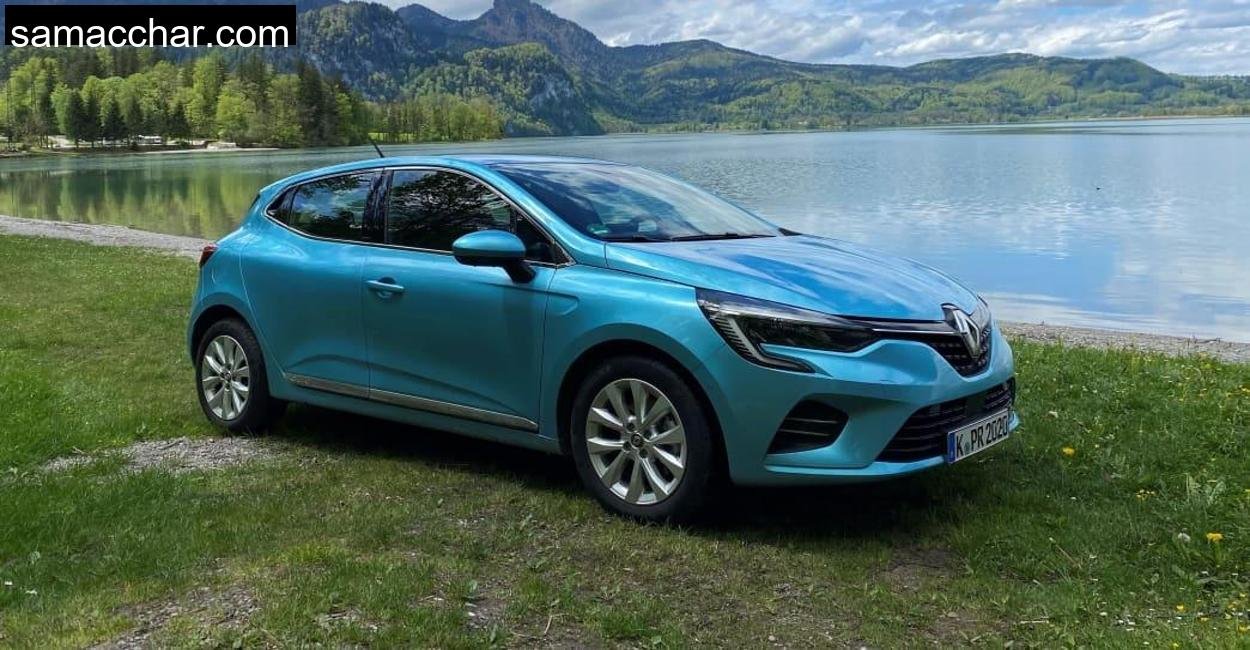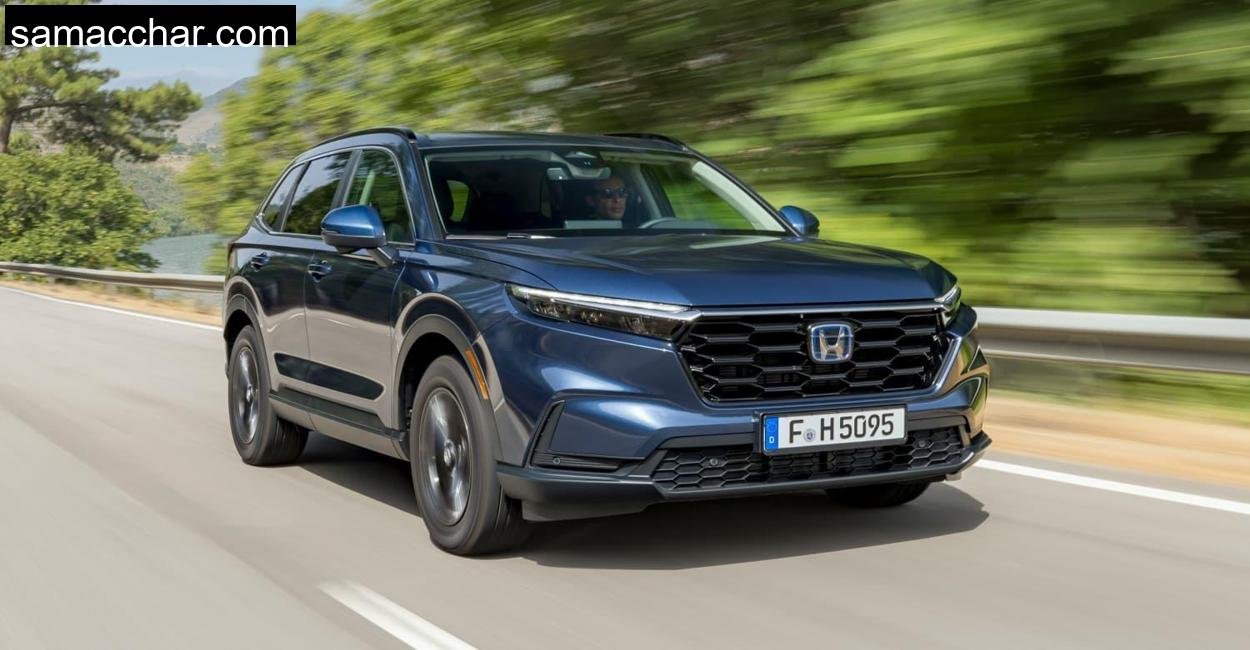Dimensions: Trunk and Space
The Renault Clio might be classed as a small car, but Renault engineers worked magic with interior packaging. The car is a mere 4.05 meters long, but inside, it delivers more space than you’d think, especially in the trunk.
With the hybrid version (E-Tech 145), space is slightly reduced because of battery packaging, but we still found the 250-liter trunk very usable. Fold the rear seats and you get up to 915 liters, measured all the way to the roof. During our daytrip into the Lützelsoon, this space comfortably fit two backpacks, a drone case, and a loaded camera bag, plus room for hiking boots and two jackets tossed on top.
Rear legroom is manageable, though it’s a bit tight for passengers over 1.75 meters. I’m 1.84 meters tall, and with the driver’s seat adjusted for myself, the rear bench was just enough for a companion around 1.70 meters. Up front though, the space is excellent, even taller drivers around 1.90 meters will feel at home.
Clio at the Evasion Test
Where the Lützelsoon’s tight winding roads didn’t quite push the Clio to its grip limits, the ADAC evasion test did. And the Clio handled itself brilliantly.
What struck us during fast cornering was the calm, planted behavior. The ESP is tuned with finesse, allowing just enough slip before gently pulling things back in line. There’s no panic, no snap oversteer, no understeer wash-out. Even sudden lane changes at high speed were dispatched with confident poise.
This is where the Clio earns serious points: it drives like a much bigger car. The suspension is composed, even over rough asphalt. In the Lützelsoon, broken roads through forest patches didn’t phase it. No squeaks, no body twist, just a quietly damped thump and onward.
Test Clio E-Tech Hybrid 145: Three Engines
This is where it gets fascinating. The Clio E-Tech Hybrid 145 isn’t a plug-in hybrid, nor is it a mild hybrid, it’s a full hybrid. It combines three power sources: a 1.6-liter four-cylinder petrol engine producing 69 kW (94 hp), a main electric motor responsible for propulsion, and a smaller starter-generator that handles engine starts and smooths transitions between power sources.
Together, they offer 143 system horsepower. This might not sound like a lot on paper, but in real-world driving, it feels lively.
Climbing a steep road near the village of Hennweiler, the hybrid drivetrain effortlessly managed the incline, starting off in electric mode, before handing over to the petrol engine without any drama. You can feel the transitions if you’re looking for them, but most of the time, they pass unnoticed.
Clio Hybrid is Economical in the City
Back down in Kirn, we cruised slowly through town traffic, stop signs, crossings, and red lights, and the hybrid Clio came into its own. It started silently from traffic lights in electric mode, gliding through intersections, only occasionally firing up the petrol engine to help out.
ADAC measured 3.5 liters/100 km in city driving. And our own loop through the towns and villages along the Hunsrück’s edge saw similar results. The regen braking is mild and well-judged, and the EV mode feels authentic, not just a gimmick.
Even better, the petrol engine is remarkably quiet at low to mid-range. At high RPM, especially under heavy throttle, it’s more vocal, but never annoying. There’s a bit of delay sometimes from the automatic transmission, which doesn’t always pick the optimal gear immediately, but that’s a minor gripe in an otherwise seamless setup.
High Consumption in the Clio TCe 90
Then there’s the TCe 90. With 91 horsepower and a three-cylinder turbocharged engine, it’s aimed at value-conscious drivers. It’s lighter, simpler, and, on paper, should be more economical.
But it’s not.
Our test loop, which mirrored the hybrid’s exactly, showed an average of 5.9 liters/100 km, exactly one liter more than the hybrid. ADAC confirmed the same result.
What’s more, the TCe 90 shows its weaknesses when pushed. Going uphill into the Lützelsoon region, especially on steeper roads like the climb toward Woppenroth, the engine needed to be revved. That’s where the vibrations creep in, through the steering wheel, through the gear lever, even subtly through the pedals. It’s functional, not delightful.
That said, it’s sprightly in everyday driving. It accelerates well between 60 and 100 km/h and responds keenly in third gear. But compared to the hybrid, it feels older. Simpler. Less resolved.
The Cheapest Clio Costs 18,350 Euros
Affordability remains a strong point. If you’re just looking for a solid, honest small car, the Clio starts at €18,350 for the 67-hp base model. The TCe 90 starts at €19,550, or €19,950 in Techno trim.
The hybrid? That’s where the price jumps. It starts at €23,300 and our test vehicle with Esprit Alpine trim costs €26,700. That gets you sporty trim, a big screen, alloy wheels, and full driver assistance systems. But you lose the double trunk floor due to the battery.
The math is simple: you pay more for the hybrid, and it may take years to recoup the fuel savings. But the driving experience is vastly better.
Neither Clio RS Nor Station Wagon Grandtour
A quick note on what’s not in the lineup. There’s no more Clio RS, and the once-practical Clio Grandtour (station wagon) is also gone. Renault’s lineup strategy has shifted, sportiness is now left to Alpine, and those who want more space are gently nudged toward the Renault Captur SUV.
It’s a shame, really. A hot hybrid RS version might’ve been fun. But what remains is a sharply dressed, well-mannered, and surprisingly refined small car.
Conclusion
The 2024 Renault Clio is one of those cars that quietly earns your respect. It doesn’t shout about horsepower. It doesn’t scream “premium” with glossy badges. But in everyday use, be it tight village streets, quiet countryside roads, or urban stop-and-go, the Clio delivers a drive that’s far above average.
In hybrid form, it’s smooth, quiet, and efficient. In petrol form, it’s affordable and practical, albeit with a few quirks. Inside, it’s high-quality, tech-forward, and thoughtfully designed. It’s no longer just a city car; it’s a serious alternative to bigger, more expensive hatchbacks.
After a day exploring the Lützelsoon’s hidden valleys, tight switchbacks, and postcard-perfect ridgelines, I stepped out of the Clio thinking: “You really don’t need more car than this.”










